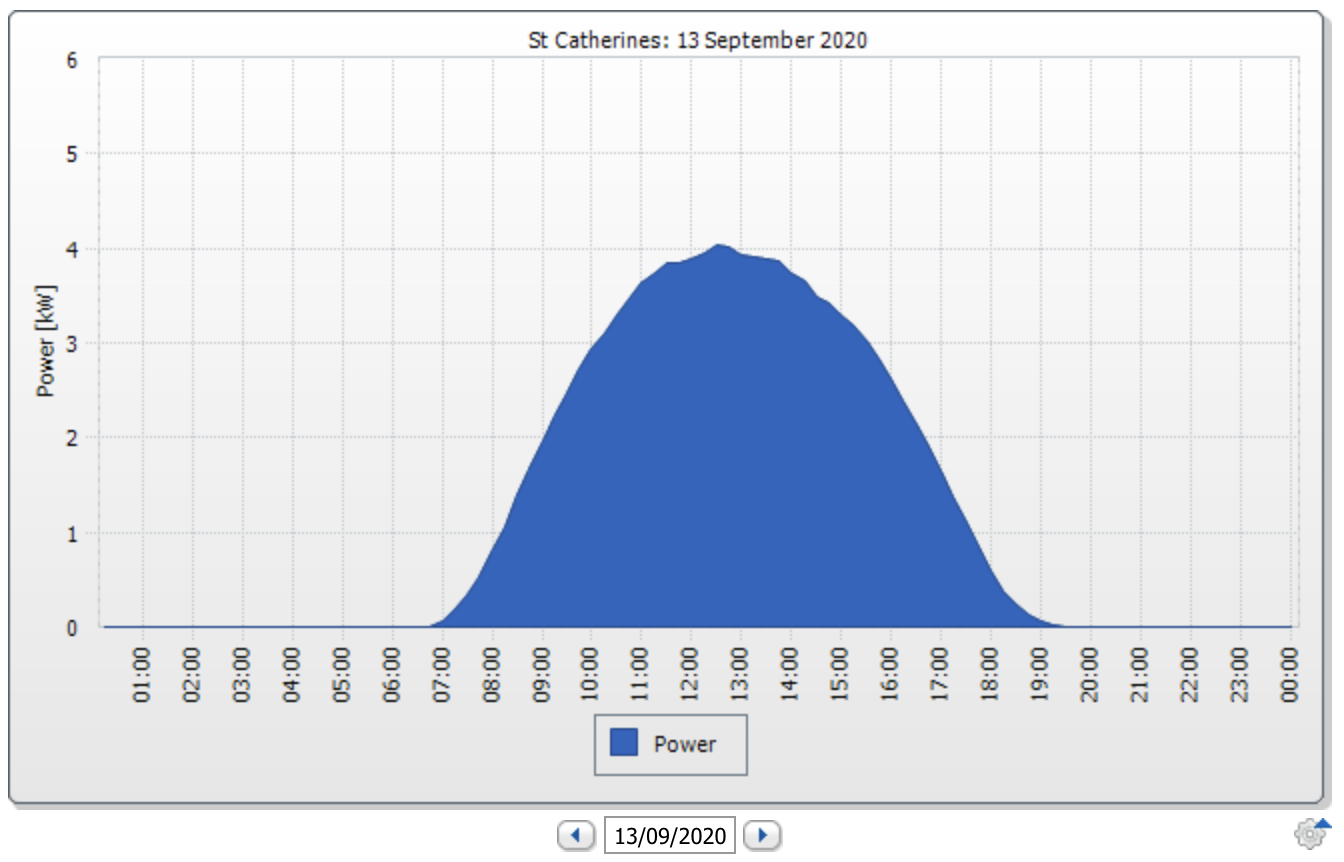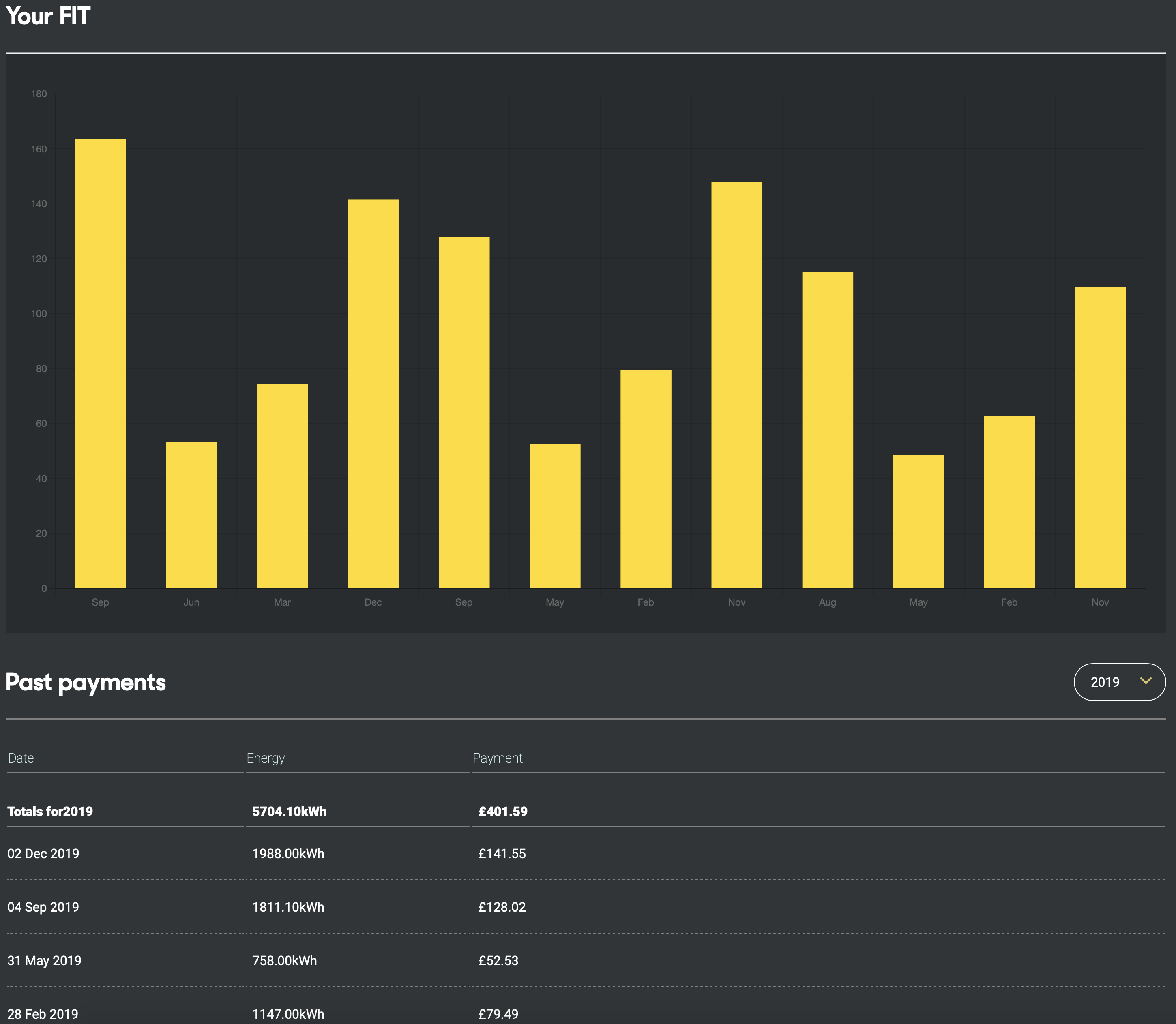How much energy does my Passive House use?
I have been monitoring both energy generation from solar P.V. and also our consumption of electricity and gas to see how much energy we use in our Passive House. I receive Feed In Tarrif payments for generation of electricity but at a rate much lower than it costs me to buy in electricity so it is in my interest to try and use as much of the generated power as I can. We always aim to run appliances such as the dish washer and washing machine during the day when electricity is being generated but generally peak useage times are in the evening when no power is being generated.
Our home is just under 3000 sq ft and has 4 occupants, and is occupied all day every day as I work from home.
We have a small gas boiler that is used to heat hot water and provide the small amount of space heating we require. During the summer months most of the hot water is heated from an electric immersion heater that is fed from excess solar P.V. generation so is essentially free.
What is my annual energy bill?
Electricity
The average annual electricity bill has been £525 for using 3226 kWh of electricity (including £87.60 of standing charges). We use more electricity than this in the house but currently I have no way of knowing how much of the power generated form solar P.V. we actually use. During daylight hours most of the background requirements such as MVHR would be covered and for 6-9 months of the year water heating and most electricity requirements during the day would also be covered by solar generation.
Gas
The average annual gas bill has been £230 for using 4213 kWh of gas (including £87.60 of standing charges).


How much energy does my Solar P.V. generate?
We have a 5.5kW system on the roof that is slightly larger than the standard 4kW systems fitted to many houses. This was expected to produce 5407 kWh per anum but we have actually improved on this slightly over the past 3 years.
The graph below shows a break down of generation month by month since the house was built. It is clear to see that very little power is generated from November to the begining of March and this very quickly ramps up to far more than we use as a household from April to September.
Click image to enlarge

Generation on a cloudless September day.

FIT payments 2019
Feed In Tariff payment
In 2019 we were paid £401.59 through the Feed In Tariff scheme. We were on the last payment level of the FIT before it finished so approx 4.5p per kHh which is much less than the approx 15p per kWh that we buy electricity at. The FIT no longer exists but has been replaced by the Smart Export Guarantee.
Annual Energy cost
Taking in to account electricity and gas bought in from external suppliers and the Feed In Tarif payments received the total energy bill for the year is £353. The solar PV generates substantially more electricity than we use. There is plenty of excess that we could be using to charge an electric car for free.
Would battery storage help my electricity bills?
Undoubtedly battery storage would help to store unused electricity generated during the day for the household to use during hours of darkness. The issue with this is that there is only an excess of power generated for approx 6 months of the year, the house already uses all of the power generated during the winter months. My total annual electricity bill is only £525 so the amount that could be saved over 6 months of the year is only a few hundred pounds. Storage systems such as Tesla Power Wall are in the region of £5k -£7k and would never payback the investment over the lifetime of the battery. This is likely to change as battery storage becomes cheaper, or if vehicle to grid storage becomes popular (using an electric car battery to help run a house in peak times).
When does battery storage make sense in a low energy house?
I think battery storage could make sense if we had an electric car, and it was not at home during the day when it could charge from solar direct. Battery storage could be charged up during the day and then used to run the house and also charge the car over night. During the months of low PV generation battery storage can be used to take advantage of cheap night time tarrifs to charge for use during peak times.
If you work from home and have an electric car battery storage does not make much sense as you could just charge the car during the day direct from the solar PV.

